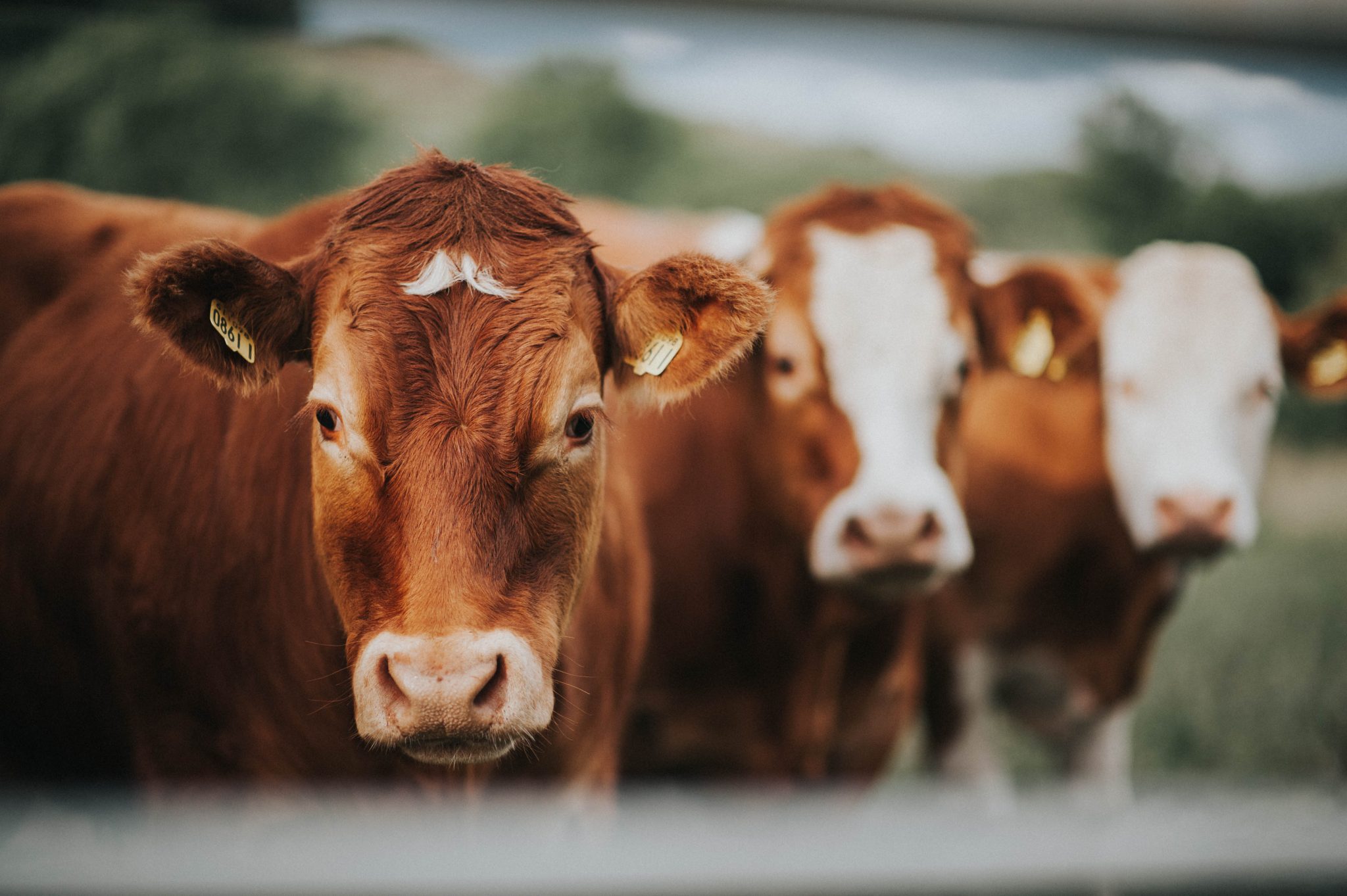Can It Be Grass Feed if You Cotton Seed Meal for Cows
Whole Cottonseed Use in Beef Cattle Diets
Feeding whole cottonseed to beef cattle can be an economical and effective way to supplement energy, fat, and protein in their diets.
As cotton is ginned, lint, debris, and cottonseed are separated. In this process, small amounts of lint remain attached to the whole cottonseed, giving the seed a fuzzy appearance. This linted whole cottonseed is used directly as a feed supplement or is further processed into cotton-related products.
Whole cottonseed can be easily fed to cattle as a protein and energy supplement. It is readily available at many gins and commodity feed suppliers throughout the Southeast and other cotton-producing areas of the United States.
Nutritive Value of Whole Cottonseed
Whole cottonseed is known to be a good source of energy, fat, fiber, and protein. On average, whole cottonseed contains 96 percent total digestible nutrients (TDN), 17 percent fat, 21 percent crude fiber, and 24 percent crude protein on a dry matter basis. Whole cottonseed is relatively low in calcium (0.16 percent) and is a good source of phosphorus (0.75 percent).
Seed quality may vary depending on the cotton variety, seed source, or any heat damage incurred during storage. Seed quality also can be adversely affected by field weathering—particularly rainfall and high humidity coupled with warm temperatures—during the latter part of the growing season and harvest. To accurately determine the nutritive value of whole cottonseed, a feed analysis should be performed.
Recommended Feeding Levels
Recommended feeding levels of whole cottonseed for mature cows is 0.5 percent of body weight. At this level of feeding, fat intake is regulated to remain below 4 percent of the total diet. This allows the rumen to continue functioning properly.
The feeding level of whole cottonseed for beef cattle is primarily limited by the high fat content more than any other nutritional factor. Fat contribution increases the energy value of whole cottonseed. This can have positive effects on female reproduction since fat is a precursor to reproductive hormones. When whole cottonseed is fed above the recommended feeding level, however, the excess fat can negatively affect rumen function. For this reason, the recommended feeding range is 6 to 8 pounds per head per day for mature cows, which equates to 1.0 to 1.3 pounds of fat.
In a trial conducted in Georgia, it was observed that when mature cattle were fed free-choice whole cottonseed, intake was erratic, ranging from 4 to 11 pounds per head per day. This is equivalent to up to 1.6 pounds of fat consumption daily. The different intake levels are believed to be based on individual metabolic tolerance to fat between individual animals.
Stocker cattle can utilize whole cottonseed in smaller amounts (0.3 percent of animal body weight per day), but it is not a recommended feed for preruminant calves. Due to low levels of calcium present in whole cottonseed, cattle fed whole cottonseed should have access to adequate mineral supplementation to balance the calcium-to-phosphorus ratio in the diet.
Another limiting nutritive factor encountered in feeding whole cottonseed to beef cattle is gossypol toxicosis. Gossypol toxicosis is generally attributed to overfeeding whole cottonseed or cottonseed meal. Of the two options, whole cottonseed can be fed in larger amounts than the meal because gossypol is released more slowly.
The main effects of gossypol toxicosis are reduced growth and fertility. Male fertility can be negatively affected by excess gossypol in the diet.
Gossypol is present throughout the cotton plant, with the highest concentration located in the seed. Gossypol is found in two main forms, bound and free. Bound gossypol binds to protein and is less toxic or available than the free form.
The two main types of cotton are pima (Gossypium barbadense) and upland (Gossypium hirsutum). Upland production accounts for over 95 percent of the U.S. crop and is the sole type in most of the United States.
Pima acreage is concentrated primarily in Arizona, New Mexico, and California. Pima generally contains higher levels of free gossypol than upland does; thus, fewer sterility issues and other problems are observed with upland cotton.
Regardless of the cotton type, challenges associated with feeding cottonseed to livestock are routinely managed by restricting intake; that is, limiting the amount of whole cottonseed in the total ration to 0.5 percent of body weight.
Recommended Feeding Methods and Storage
Cattle should be allowed an acclimation period when transitioning to feeding on whole cottonseed. Weaned calves or stocker cattle may require longer acclimation periods. This is generally associated with acclimating to eating from a feed trough.
The most ideal feeding method for whole cottonseed is hand feeding to prevent overconsumption. Hand feeding can be done in a trough or under a temporary electric fence with minimal waste.
Whole cottonseed does not flow easily. This results in V-shaped automatic feeders, augers, or feed trucks becoming clogged. Front-end loaders or buckets are better suited for dispensing whole cottonseed.
Whole cottonseed as feed does not require further processing. For storage, commodity sheds are ideal for large operations because they easily allow use of a front-end loader for handling. In smaller operations, peanut or gravity wagons are good choices because they allow access by means of a scoop or bucket.
Whole cottonseed should be stored out of the rain to prevent moisture and mold accumulation. The chance of overheating can be reduced by storing whole cottonseed in stacks less than 8 feet high on a concrete pad in an open-air barn. Storage on a dirt floor or a layer of plastic may cause seed to sweat or exchange heat with the surface. If stored properly, whole cottonseed can last one to two years under dry conditions before feed out.
Summary
Feeding whole cottonseed can be an effective way to supplement energy, fat, and protein to beef cattle. Due to the relatively limited processing and handling methods required, it can be easily accessed and utilized by producers.
After an acclimation period, whole cottonseed may be fed to cattle at multiple stages of production. With proper management and feeding practices, producers can limit negative impacts from overconsumption of fat and reduce the potential for gossypol toxicosis.
Download a PDF of Whole Cottonseed Use in Beef Cattle Diets, ANR-2608.

Did you find this helpful?
Source: https://www.aces.edu/blog/topics/beef/whole-cottonseed-use-in-beef-cattle-diets/

0 Response to "Can It Be Grass Feed if You Cotton Seed Meal for Cows"
Enregistrer un commentaire